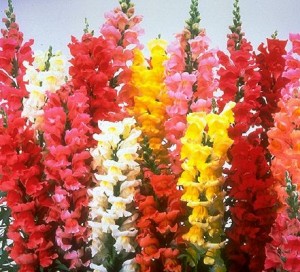The Reasons We Use Scientific Names of Plants
Nicknames Easier to Pronounce, But Not Correct

Why do we use those hard-to-pronounce scientific names of plants? Is it out of smugness? Wouldn’t it be more “democratic” to use the common monikers (or “nicknames”) that everyone can understand, instead of the hoity-toity botanical names?
Ironically, that’s just the point: Not everyone can understand what particular specimens are being referred to by those charming old nicknames. The latter varies not only from language to language but even from region to region. Thus we inject too much confusion into the discussion when we forgo using scientific names of plants in favor of their nicknames. In fact, even within the same region, a specimen may well have more than one nickname attributed to it. Or in some cases, none exists at all for a given specimen. Worse yet, two specimens quite unrelated may share the exact same nickname!
Scientific Names of Plants to the Rescue!
It was to combat such confusion that Swedish naturalist Carolus (Carl) Linnaeus (1707-1778) developed what is known as the binomial system for taxonomy — in other works, the use of scientific names for plants. “Binomial” means that two words are used for classification purposes, and those two words are in Latin (or Latinized, at least). You may remember from History class that Latin was once the universal language of Western scholars. And it is that very universality that is still relied upon to bring some clarity to the business of plant classification, in the form of scientific names for plants. So if you plug Glechoma hederacea, for instance, into the Google search engine, by about the fourth page of results you’ll see that some of the entries are in languages other than English. That’s universality for you, and that’s the beauty of the scientific names of plants.
Speaking of Glechoma hederacea, the weed to which it refers with such clarity provides a wonderful example of the superiority of scientific names of plants over their common counterparts. For Glechoma hederacea has enough nicknames attached to it to make your head spin! One of them is “creeping charlie.” But to get some indication of how confusing it can be to forgo scientific names of plants in favor of nicknames, see my article on Japanese Yews, which also relates some of the histories on this storied yet obscure shrub.
Pronunciation of the Scientific Names of Plants
But admittedly, the pronunciation of the scientific names of plants is another matter altogether. For the pronunciation of the scientific names of plants can be downright confusing! And the confusion is exacerbated by the fact that, in some cases, there is more than one proper pronunciation for the word. Thus you can go your whole life hearing the certain (and proper) pronunciations of the scientific names of plants, only to encounter other (equally proper) pronunciations that leave you scratching your head.
Below I have compiled a list of 10 scientific names of plants with problematic pronunciations. These entries make the list either because they are widely mispronounced, or because they frustrate us with the dual pronunciations to which I just alluded. Not all of the 10 scientific names of plants below are, strictly speaking, Latin; but where they are not, the word does at least derive from the Latin, which is the source of the confusion:
Top 10 Difficult-to-Pronounce Scientific Names of Plants
1. clematis: CLE-muh-tuhs or cle-MA-tuhs
2. Peony: PE-uh-ne or pe-O-ne
3. Cotoneaster: cuh-TO-ne-AS-tuhr (although even my dictionary gives some legitimacy to the mispronunciation, CAWT-tuhn-ES-tuhr)
4. Poinsettia: poyn-SEH-tuh or poyn-SEH-te-uh (Although we constantly hear the incorrect poynt-SEH-tuh.)
5. Chamomile: KAM-uh-mil or KAM-uh-mel
6. achillea: A-kuh-LE-a or a-KIH-le-uh
7. lamium: LAY-me-uhm
8. Lupine: LU-puhn (Although there is a word with the exact same spelling, pronounced LU-pin, which means “pertaining to a wolf”; go figure!)
9. Forsythia: fohr-SIH-the-a (The plant is not “for Cynthia” — it’s for all of us!)
10. Kalanchoe: My favorite, with its 4 pronunciations, all of which are correct–
· KA-luhn-KO-e
· kuh-LANG-ko-e
· KAL-uhn-cho
· kuh-LAN-cho.
Question: Jimmie, I hope you can help me. Sorry to waste your time if not but I am so frustrated What can you recommend for a three-year-old rose of Sharon bush that has many, many buds but will not flower…? Janice L. in Prosper.
Answer: Hi Janice, try not to get frustrated. We all have things in life that get us frustrated, most of them tend not to be worth the stress! Life is stressful enough without our landscaping contributing to it. There are many possible answers as to why your rose of Sharon flower buds is not opening, including:
· Shade: Rose of Sharon will not bloom up to its full capabilities if given too much shade.
· Rot: During rainy summers, rot can set in and ruin the flower bud (although you may not notice it from the outside). The same effect can be produced by excessive watering if you water overhead.
· Drought: Conversely, during dry summers, the rose of Sharon flower buds may be damaged from drought and fail to open. At least yours are budding which should be an encouraging thing! Now if you can just get to the next step in getting them to open that is one more ounce of frustration off your plate! Until next time…Happy 4th of July to all….!!
